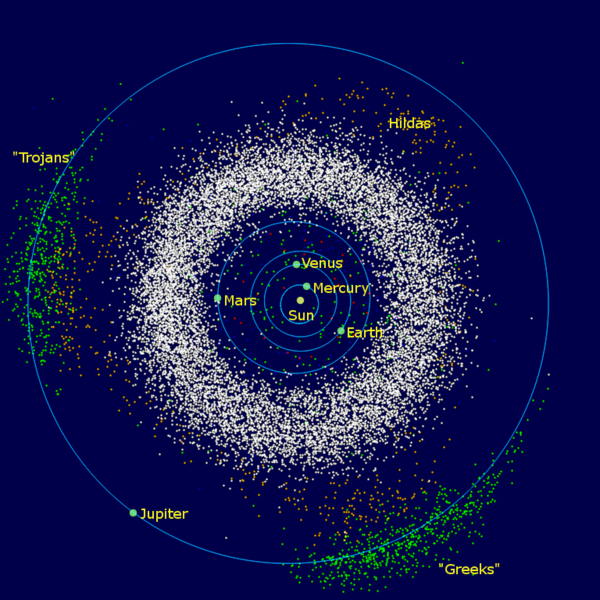At evening dusk on May 12-15, 2021, watch for the young and slender waxing crescent moon in the western twilight sky. On these evenings, the moon will sweep by three bright evening planets. It’ll go by Venus – the brightest planet closest to the horizon – on May 12. It’ll go by Mercury, the solar system’s innermost planet, the following day. Then, on or near May 15, the moon will pass the red planet Mars. Find these worlds – look down at Earth below your feet – and you’ll be seeing the whole inner solar system.
Although the chart is especially designed for mid-northern latitudes in North America, people from around the world can use the moon on these evenings as a guide to this line-up of planets. We’ll all see the planets in the west after sunset. We’ll all see the moon start out as a slim crescent, which waxes larger each evening. Want a more precise view of the moon and planets from your location? Try Stellarium.
No matter where you live, you’ll need an unobstructed horizon in the direction of sunset to increase your chances of catching the exceedingly thin young moon and Venus low in the sky and near the horizon, after sunset May 12. Even though the moon and Venus rank as the second-brightest and third-brightest celestial bodies to light up the heavens, after the sun, the brilliant twosome must compete with the evening twilight glow in the west. And you can’t wait to see them until twilight fades: the moon and Venus will follow the sun beneath the horizon before nightfall.
Here, in the mainland United States, the moon and Venus set roughly one hour after the sun on May 12 (given a level horizon). In a clear sky, you might catch the celestial couple with binoculars 40 to 60 minutes (or possibly earlier) after sundown.
To find out when the sun and moon set in your sky, visit Sunrise Sunset Calendars, remembering to check the moonrise and moonset box.
Find out when Venus (and the other planets) set in your sky via Old Farmer’s Almanac (U.S. and Canada) or TimeandDate (worldwide)
If you miss the moon and/or Venus on May 12, try again on May 13, as a wider yet still slender lunar crescent shines higher up at sunset, and stays out longer after darkness falls. What’s more, the illuminated side of the moon points at Venus, and you’re more likely to catch the soft glow of earthshine adorning the dark (nighttime) side of the moon. Think photo opportunity!
In their order of brilliance, Venus is the brightest planet by far, followed by Mercury and then Mars. Yet, the fainter planets have the advantage of setting later, as Mercury sets after Venus, and Mars sets after Mercury. On May 12, Venus is some 36 times brighter than Mercury and 163 times brighter than Mars (making Mercury about 4.5 times brighter than Mars). Given clear skies, you should have a good chance of spotting Mercury and Mars with the eye alone.

Mercury shines on a par with the sky’s most brilliant stars, so you should be able to view this world with the eye alone an hour or so after sunset. But there’s nothing like binoculars to help out when seeing conditions are less than ideal, or to enable you to spot Mercury all the sooner after sundown.
Mars stays out for a few hours after nightfall. Although Mars is only modestly-bright, this world should be relatively easy to see in a dark sky.
In the mainland United States, Mercury sets almost 2 hours after sunset whereas Mars sets nearly 4 hours after sunset. To find out when they set in your sky, check out a recommended almanac.
These three evening planets plus our planet Earth – Mercury, Venus, Earth and Mars – are called the inner planets, to distinguish them from the four outer planets: Jupiter, Saturn, Uranus and Neptune. Whereas the inner solar system is composed of rather small terrestrial or rocky planets, those of the outer solar system are much larger, consisting of gas giants (Jupiter and Saturn) and ice giants (Uranus and Neptune).

The inner planets orbit the sun inside the asteroid belt while the outer planets go around the sun outside the asteroid belt. By the way, the two bright outer planets that can be easily seen with the eye alone (Jupiter and Saturn) are now found in the morning sky. The moon will be sweeping by these gas giant worlds in late May and early June 2021.

Bottom line: Use the young waxing crescent moon to find the planets of the inner solar system from May 12-15, 2021: Mercury, Venus, (Earth) and Mars!











